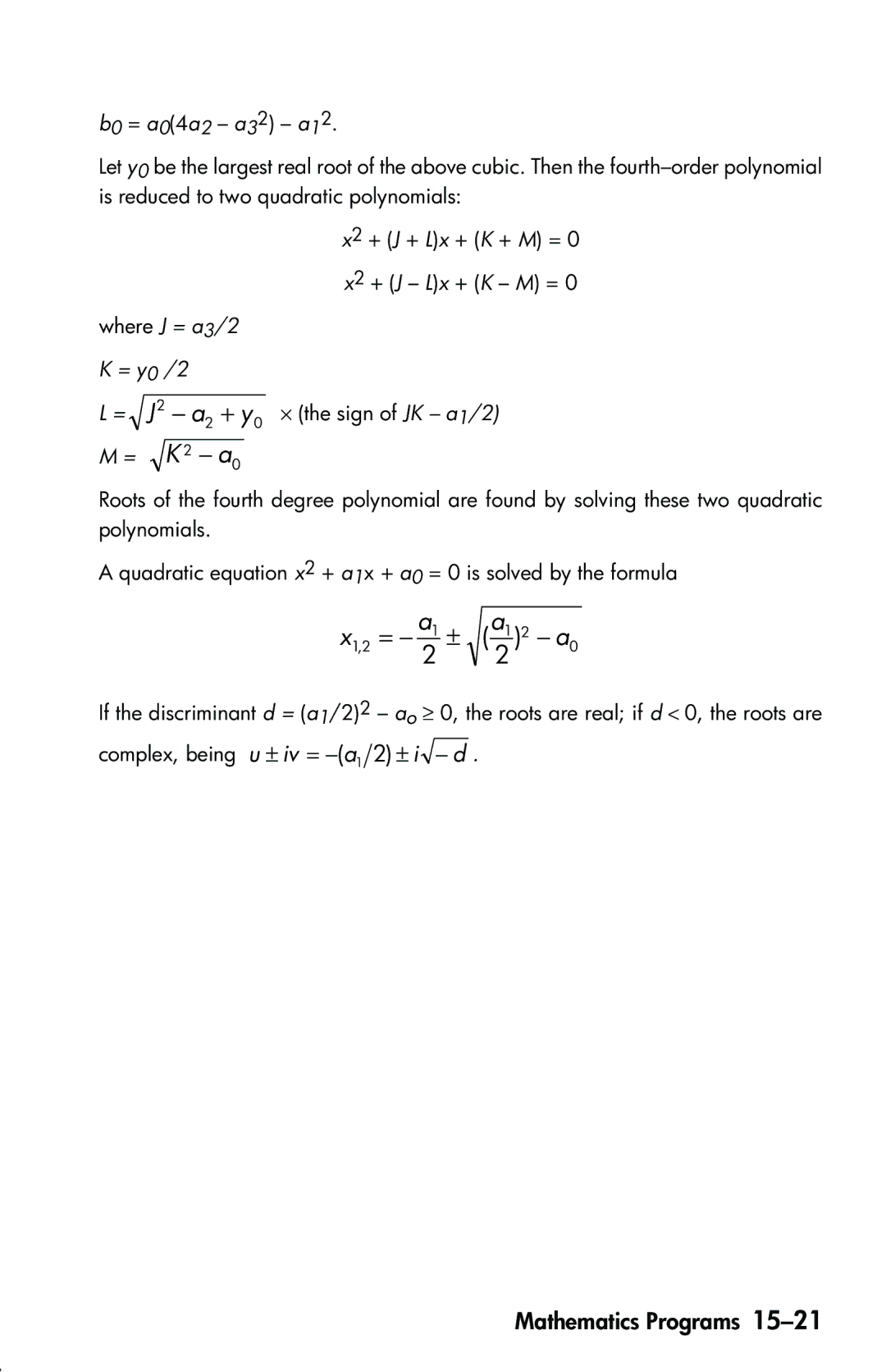
b0 = a0(4a2 – a32) – a12.
Let y0 be the largest real root of the above cubic. Then the
|
|
| x2 + (J + L)x + (K + M) = 0 |
|
|
| x2 + (J – L)x + (K – M) = 0 |
where J = a3/2 |
|
| |
K = y0 /2 |
|
| |
L = | J2 − a + y | 0 | ⋅ (the sign of JK – a1/2) |
| 2 |
| |
M = | K 2 − a |
|
|
| 0 |
|
|
Roots of the fourth degree polynomial are found by solving these two quadratic polynomials.
A quadratic equation x2 + a1x + a0 = 0 is solved by the formula
x1,2 = − a21 ±  (a21 )2 − a0
(a21 )2 − a0
If the discriminant d = (a1/2)2 – ao ≥ 0, the roots are real; if d < 0, the roots are complex, being u ± iv = −(a1 2) ± i ![]() − d .
− d .
